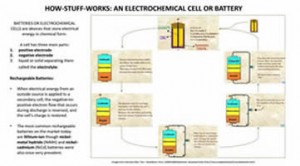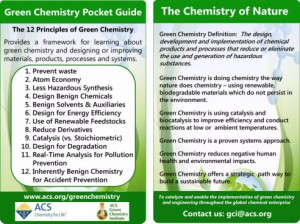What is Green Chemistry?
Green Chemistry is like the classic ‘Reduce, Reuse, Recycle’ carried to its logical conclusion in the chemical world.
The American Chemical Society offers a description of its 12 principles for Green Chemistry
1. Prevent Waste
2. Atom Economy
3. Less Hazardous Synthesis
4. Design Benign Chemicals
5. Benign Solvents & Auxiliaries
6. Design for Energy Efficiency
7. Use of Renewable Feedstocks
8. Reduce Derivatives
9. Catalysis (vs. Stoichiometric)
10. Design for Degradation
11. Real-Time Analysis for Pollution Prevention
12. Inherently Benign Chemistry for Accident Prevention
If you are less technically-minded, these points summarize the main principles pretty well
• Smarter
• Safer
• More Efficient
• Saves Money
• Conserves Energy
• Prevents Pollution
• Designed for Reuse or Recycle
• Polishes Chem’s Public Image
The ACS even has a Green Chemistry Institute if you want to see the most up to date information.
Why is Green Chemistry so important?
We as a society have gotten pretty good at chemistry. We can synthesize so many different chemicals, but many of these will lead to undesired – and possibly harmful – side products. Asbestos is a very useful fireproof fiber. It’s a shame that it is harmful to humans. We have alternatives now. Plastic bottles, bags, and other things are very lightweight and last forever, or at least a few hundred years after we are through with them. Different companies have come up with biodegradable options for some uses. There are many ways to solve problems with chemistry, and we want to find the best solution based on the principles above.
Here are our posters and handouts from the Atlanta Science Festival
 |
 |
 |
 |

